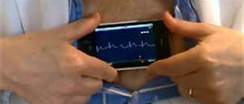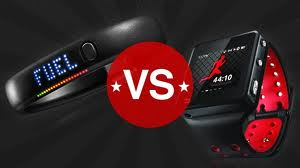Happy New Year to all the readers of this blog! You’ve probably noticed that the frequency of posts has declined over the past year. We’re putting more focus on contributing to some other publications (in 2012 that included Health Data Management, Dorland Health’s Social Media in Healthcare, and several others). We’ll add a media page in 2013 to list publications, podcasts, videos, interviews and presentations. If you’ve so much as dabbled in social media, you know we’re prolific on Twitter (@janicemccallum) and use LinkedIn and Google+ to share industry news. Contact me if you want to know the best way to receive updates that suit your needs.
My parting thought for 2012 relates to mobile health (a.k.a. mhealth). There’s general agreement among analysts that mobile devices and mobile communication vastly improve the ability to reach more patients at a reduced cost. There’s also strong evidence that people who use mobile devices to track their activities and vital signs become better at managing their health. Unfortunately, some regulatory hurdles and standards issues stand in the way of optimal sharing of data between stakeholders. In addition, there’s not much agreement on what business model will prevail in the field of mhealth. My advice for divining the future of mhealth: think of the medical devices, mobile devices, and the data that are produced and monitored by the devices as an integrated unit because it’s the value of the data that will determine the best potential revenue models in the long run.
We’re entering a phase where medical devices have become digital sensors that collect, transmit and analyze data. At the same time, the technology has advanced to the point where devices can be miniaturized to allow “wearable tech”, that is, devices that can be clipped to one’s clothing, strapped on one’s body, even imbedded into one’s body. Also, mobile phones are adding physical attachments and apps  that extend the functionality of smart phones to include tasks that previously required single-purpose specialized medical devices—including stethoscopes and ECG machines, like the AliveCor ECG pictured at left. Many of the more advanced apps are targeted to physicians. However, it is consumer interest in wearable tech devices for tracking fitness and vital signs that will drive down costs and increase overall demand for advanced health and fitness applications.
that extend the functionality of smart phones to include tasks that previously required single-purpose specialized medical devices—including stethoscopes and ECG machines, like the AliveCor ECG pictured at left. Many of the more advanced apps are targeted to physicians. However, it is consumer interest in wearable tech devices for tracking fitness and vital signs that will drive down costs and increase overall demand for advanced health and fitness applications.
Medical device manufacturers that currently sell implantable devices to providers have some thorny issues to work out related to access and control of the data that are generated by the devices. Hugo Campos, who has an implantable cardioverter defibrillator (ICD), has brought these issues to light through his advocacy efforts based on his desire to learn from the data tracked by his ICD.
The future of mhealth devices and data monitoring will be brighter if the consumers who wear the devices have full access to the data generated by the devices and have control over who else is allowed to access their data. I advise the medical device industry to watch carefully what is happening in the consumer fitness  and wellness device segment. Companies like Nike with its Fuelband and Motorola with its MOTOACTV device (both pictured at left), which can be worn on one’s wrist and BodyMedia’s Fit Link armband device are measuring much more than early devices that weren’t much more than upgraded pedometers. The mobile technology will likely follow a standard path of further miniaturization and increasing processing power with costs declining over time. It’s rather ironic that portions of our population that have eschewed traditional wristwatches in favor of mobile phones may soon be sporting devices that include orders of magnitude more functionality than early cellular phones on their wrists as fashion items that have the side benefit of helping them stay healthy—and can tell the time. The wristwatch may soon enjoy a renaissance!
and wellness device segment. Companies like Nike with its Fuelband and Motorola with its MOTOACTV device (both pictured at left), which can be worn on one’s wrist and BodyMedia’s Fit Link armband device are measuring much more than early devices that weren’t much more than upgraded pedometers. The mobile technology will likely follow a standard path of further miniaturization and increasing processing power with costs declining over time. It’s rather ironic that portions of our population that have eschewed traditional wristwatches in favor of mobile phones may soon be sporting devices that include orders of magnitude more functionality than early cellular phones on their wrists as fashion items that have the side benefit of helping them stay healthy—and can tell the time. The wristwatch may soon enjoy a renaissance!
References and further reading for this article:
http://www.domusweb.it/en/design/fitness-by-design/
http://thewirecutter.com/reviews/fitbit-ultra-is-the-best-activity-tracker/
http://www.venturevalkyrie.com/2012/12/10/in-car-health-monitoring-lemon-or-lifesaver/4849